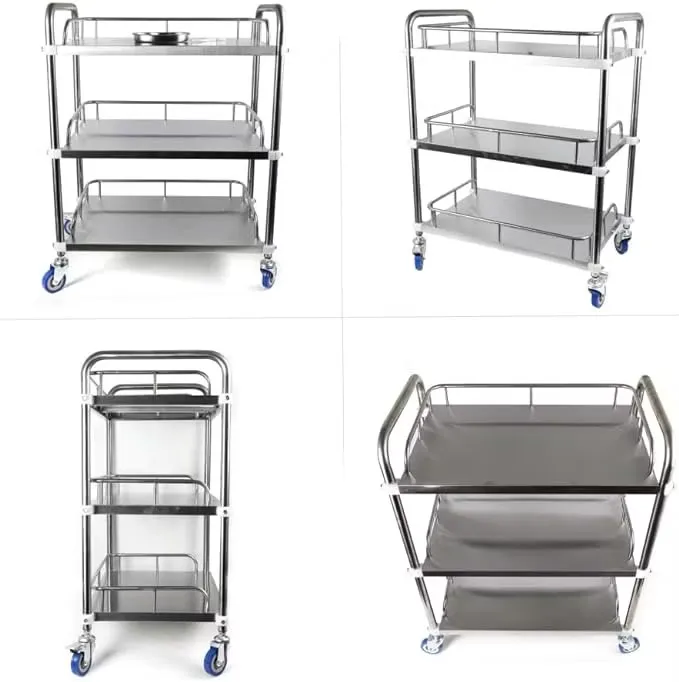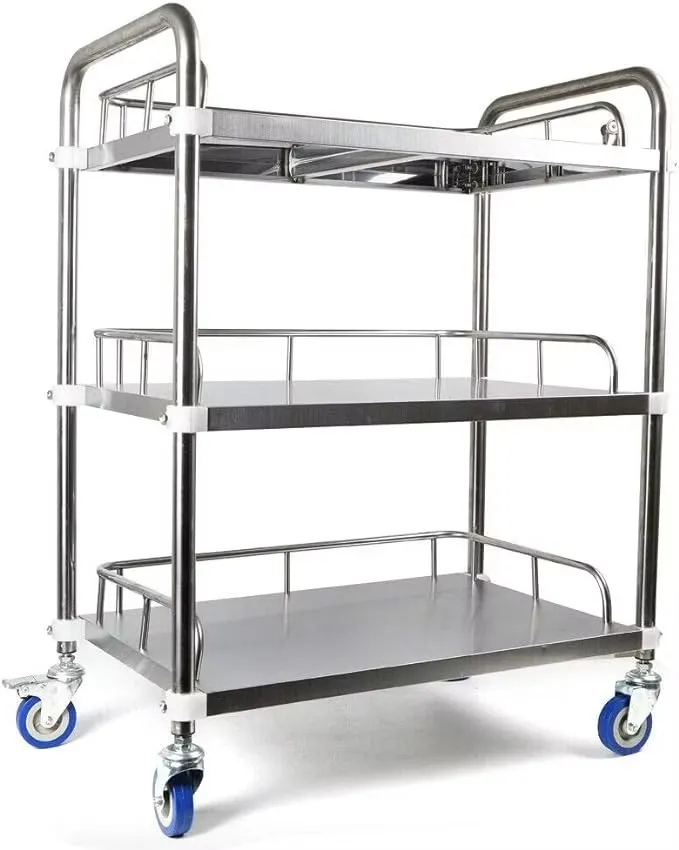Need a Medical Cart with Locking Drawers & Smooth Mobility?
Field Notes on a Stainless Workhorse: Medical Mobile Adjustable Trolley SS304 Cart
If you’ve ever shadowed a nurse during a double shift, you know how much mileage a good medical cart covers. This particular unit—the Medical Mobile Adjustable Trolley SS304 Cart (Model ZF-MT-02), born in Zhouhu Village, Jizhou Zone, Hengshui City, Hebei Province, China—leans into durability first, then quietly layers on the smart stuff. To be honest, that’s how most hospitals buy: solid frame, predictable performance, then optional tech if the budget cooperates.

What’s shaping carts in 2025
Industry trends are surprisingly pragmatic: infection control (SS304 is still king), cable discipline, modular drawers, and optional battery power for all-day computing. Many customers say they want “no drama” mobility—quiet casters, lock-on-demand, and height adjustment that actually stays put. Also, EHR stations-on-wheels are bleeding into treatment carts; lines are blurring, which makes the medical cart category more versatile than ever.
Technical snapshot
| Model | ZF-MT-02 | Frame Material | SS304 (18/8 stainless), brushed finish |
| Voltage (optional power) | 220V input; battery module optional | Height Adjust | ≈ 750–1100 mm (gas-spring) |
| Payload | ≈ 120 kg (real-world use may vary) | Casters | 4 × 5” antistatic, dual-locking |
| Drawers/Modules | 2–4 configurable, coded handles | Certs/Compliance | Factory ISO 13485; CE; RoHS; IEC 60601-1 ready with power kit |

Materials, methods, and testing (how it’s built)
The frame uses SS304 plate and tubing, laser-cut and TIG-welded, then passivated. Drawers glide on ball-bearing slides; edges are deburred to spare gloves and sleeves. Internal tests: static load at 150 kg (24h) without visible deformation; drawer cycle test at 20,000 ops; salt-spray (ASTM B117) for 72h with no red rust on the stainless. EMC considerations apply only when the optional power/computing kit is installed (tested to IEC 60601-1 and EN 60601-1-2, lab reports available on request). Stated service life: ≈ 8–10 years with routine maintenance—though, honestly, harsh cleaners can shorten that.
Where it works best
- Medication rounds, crash-response layouts (color-coded drawers help).
- ICU/ER device staging with cable management—keeps the medical cart tangle-free.
- Procedure rooms, endoscopy, and minor OR adjuncts; lab sample runs.
- Pharmacy and day-surgery prep; even dental/ophthalmic suites.
Customization and options
This medical cart can be tailored: drawer counts, lock types (key, RFID), label rails, waste bins, glove boxes, ESD casters, IV poles, laptop/PC mounts, and a 220V-ready power module (LiFePO₄ battery pack is common—capacity finalized per use case). Lead time for custom runs is usually 3–5 weeks, depending on color and accessories.
Vendor comparison (quick take)
| Vendor | Material | Load cap. | Warranty | Customization | Certs | Price |
|---|---|---|---|---|---|---|
| Zhaofa (ZF-MT-02) | SS304 | ≈120 kg | 2 years | High (3–5 wks) | ISO 13485, CE | $$ |
| Generic Import A | Powder-coated steel | ≈80–100 kg | 1 year | Medium | Basic RoHS | $ |
| Premium Brand B | Aluminum/ABS mix | ≈100–120 kg | 3–5 years | High (6–8 wks) | ISO 13485, CE, UL | $$$ |
Real-world use: two quick stories
A 600-bed regional hospital (North China) swapped aging units for 40 of these medical carts. After three months, pharmacy reported a 18% reduction in restock time—mostly thanks to standardized drawer layouts and smoother casters. In another site, an ICU added power modules; nurses liked the height range (less wrist strain, their words), though one note: set drawer dampers if you run heavy defib pads; otherwise you’ll hear it.

Why SS304 still wins
Stainless isn’t flashy, but it’s reliable under aggressive cleaners. Passivated SS304 shrugs off most disinfectants and—importantly—doesn’t chip like paint. For a medical cart that lives in hallways, that matters more than you might think.
Citations:
1) ISO 13485:2016 Medical devices — Quality management systems — Requirements for regulatory purposes: https://www.iso.org/standard/59752.html
2) IEC 60601-1: Medical electrical equipment — General requirements for basic safety and essential performance: https://webstore.iec.ch/publication/2612
3) EN 60601-1-2 (EMC): https://webstore.iec.ch/publication/2613
4) ASTM B117 Salt Spray: https://www.astm.org/b0117-19.html
5) WHO Guidelines on Infection Prevention: https://www.who.int/teams/integrated-health-services/infection-prevention-control




































